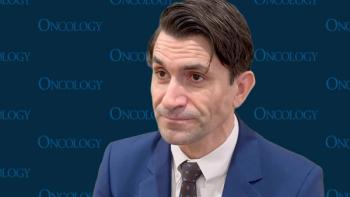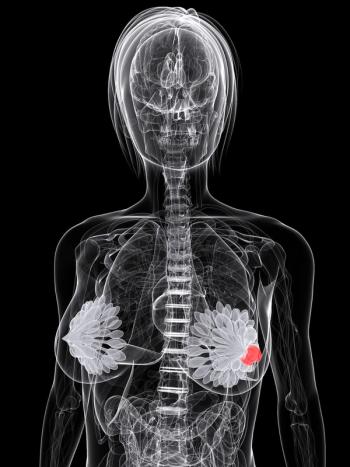
Oncology NEWS International
- Oncology NEWS International Vol 5 No 11
- Volume 5
- Issue 11
Resonance Energy Transfer Assay Measures HIV-1 Fusion
TARRYTOWN, NY--An essential step in the life cycle of HIV is entry into the cell, allowing delivery of the viral genetic information to the target cell cytoplasm. Attachment and fusion are the critical events that make this possible.
TARRYTOWN, NY--An essential step in the life cycle of HIV is entry into the cell, allowing delivery of the viral genetic information to the target cell cytoplasm. Attachment and fusion are the critical events that make this possible.
A new HIV assay, developed by Progenics Pharmaceuticals, Inc. and known as ProSys, permits real-time determination of glycoprotein-mediated membrane fusion.
Such research could help lay the groundwork for development of therapeutic agents to specifically inhibit HIV membrane fusion, says Graham P. Allaway, PhD, head of Progenics' Therapeutic Development Group.
The assay system works by a technique known as resonance energy transfer (REF). The assay measures the fusion of two plasma membranes, one labeled with a fluorescent dye that expresses the HIV envelope glycoprotein (gp120-gp41) and one with a dye that expresses the CD4 receptor. Fusion results in the close association of the dyes in the plasma membranes and is detected by the transfer of energy between the dyes.
Researchers used ProSys to analyze HIV-1 membrane fusion with CD4+ target cell lines in both a laboratory-adapted HIV strain and a primary isolate. They found that membrane fusion mediated by the envelope glycoproteins of these viruses had very similar properties (Journal of Virology 70:6437-6441, 1996).
"In particular," Dr. Allaway says, "the degree and kinetics of membrane fusion were similar. Membrane fusion mediated by both isolates occurred at neutral pH and was dependent on the presence of divalent cations."
In the primary HIV isolate, fusion was inhibited at levels of soluble CD4 and CD4-IgG2 (a CD4-Ig fusion protein) similar to those required to neutralize the virus. However, in the laboratory strain, higher levels of CD4 and CD4-IgG2 were required to inhibit than to neutralize membrane fusion. "This finding suggests that the mechanisms of membrane fusion inhibition and neutralization of HIV-1 are distinct," he commented.
Dr. Allaway's co-workers in the study were Virginia Litwin, Kirsten Nagashima, Andrew Ryder, Chun-Huey Chang, Jeffrey Carver, William Olson, Karl Hasel, and Paul Maddon of Progenics, and Marc Alizon of the Institut Cochin de Genetique Moleculaire, Paris.
Articles in this issue
about 29 years ago
Factor Analysis of New Symptom Scale in Breast Cancer Finds Six Clustersabout 29 years ago
AIDS Funding Increased for Fiscal '97about 29 years ago
'Cancer Rates and Risks' Availableabout 29 years ago
New Breast Cancer Patient Resource Is Availableabout 29 years ago
Short-Term Metronidazole not Linked to Cancerabout 29 years ago
Various Capitation Models Are Available for Oncology Networksabout 29 years ago
NCI Urges full Disclosure of Cigarette Contentsabout 29 years ago
Antifungal Resistance on the Increaseabout 29 years ago
Fentanyl Patch Useful Alternative in Cancer Pain Patientsabout 29 years ago
Analysis of Microvessel Density Predicts Extraprostatic SpreadNewsletter
Stay up to date on recent advances in the multidisciplinary approach to cancer.

















































































